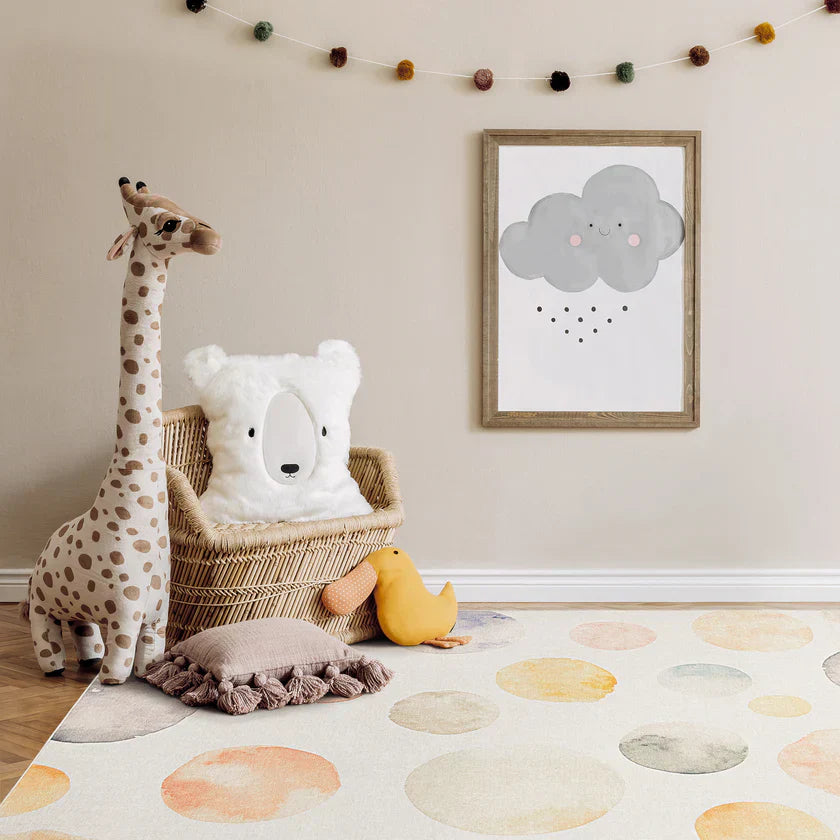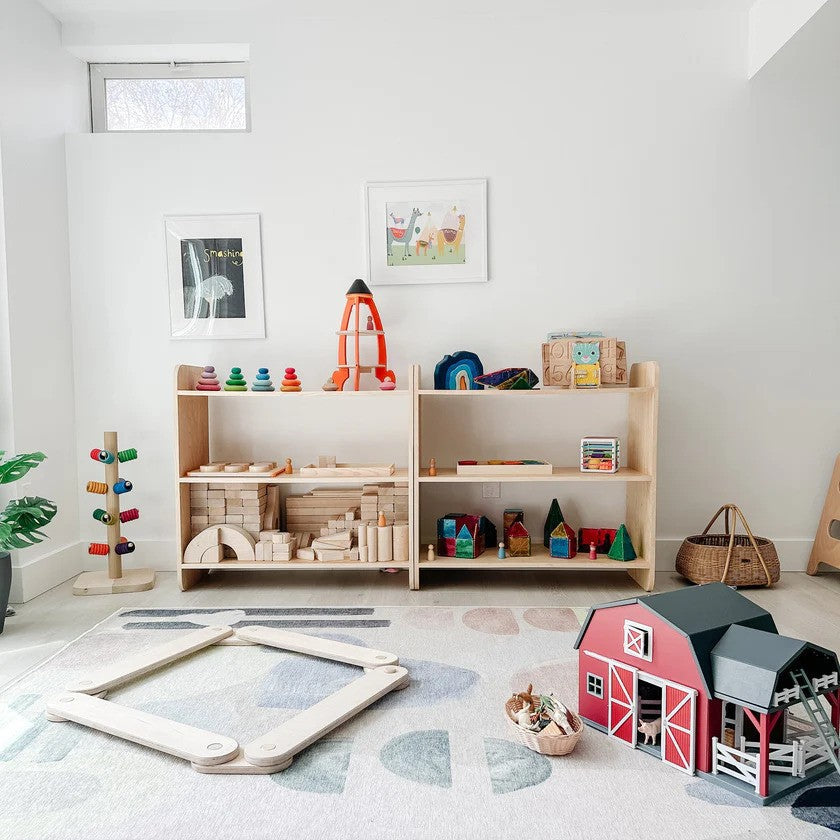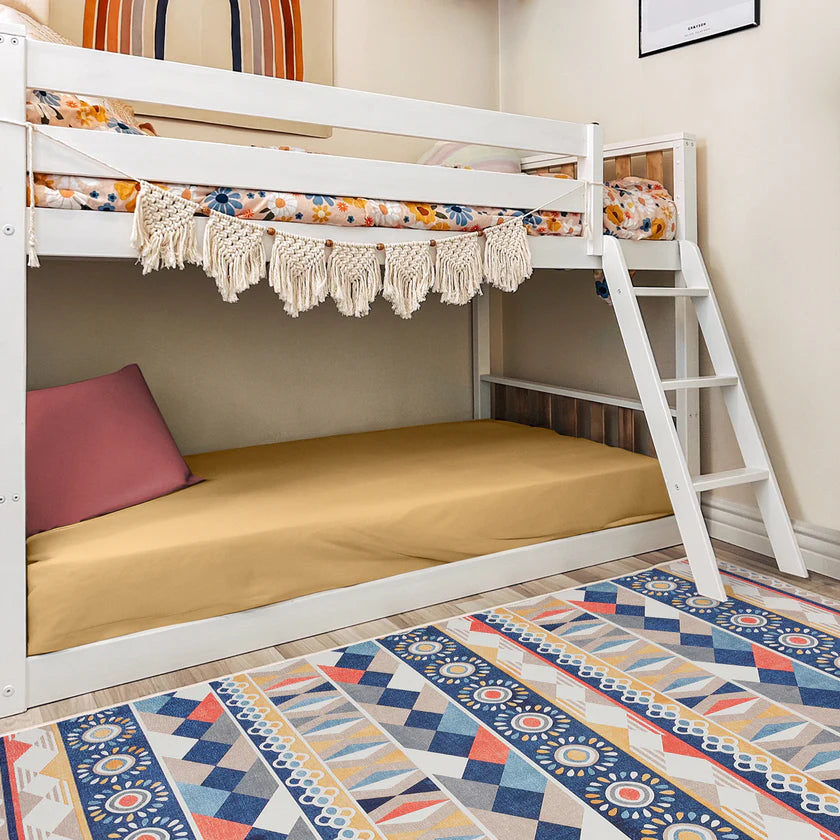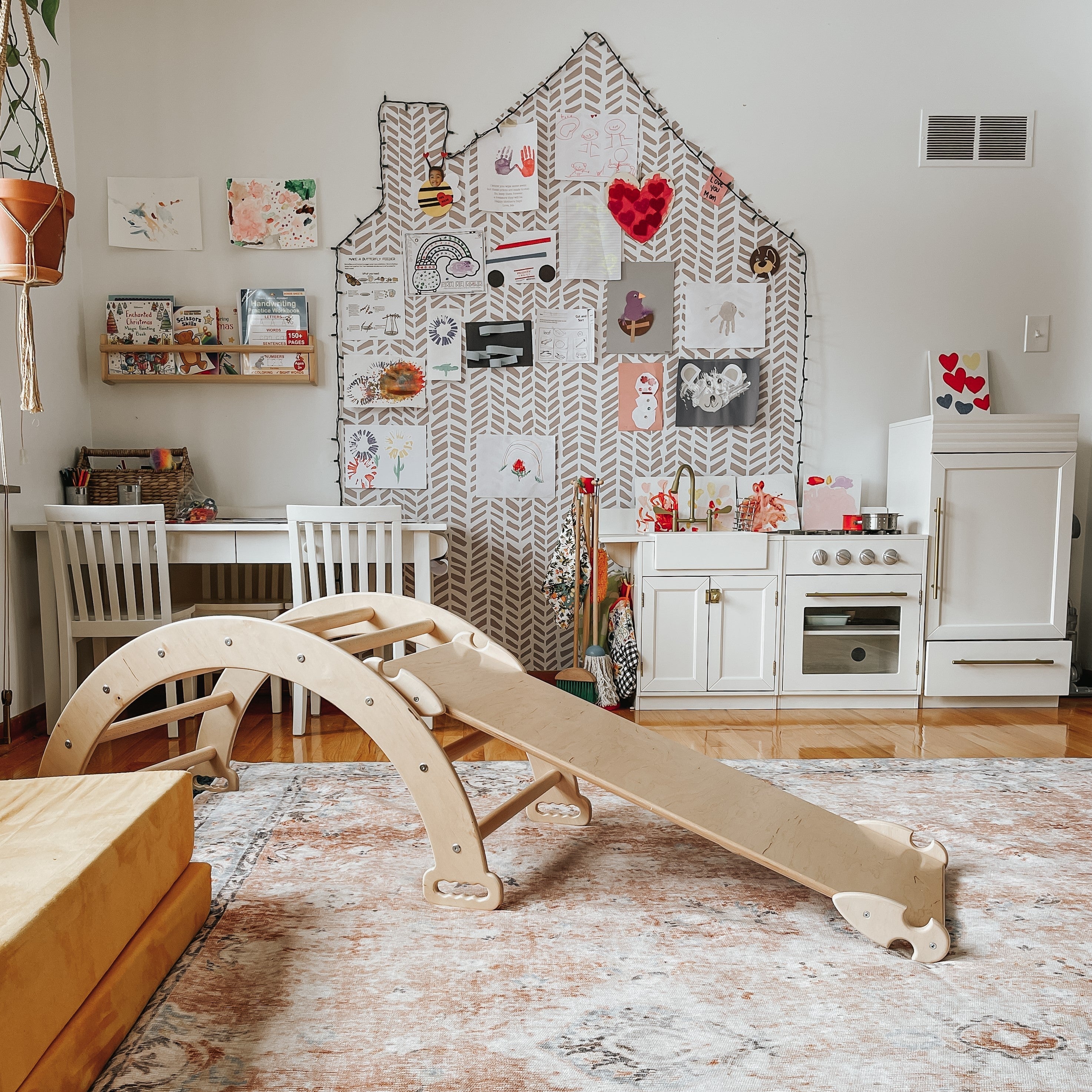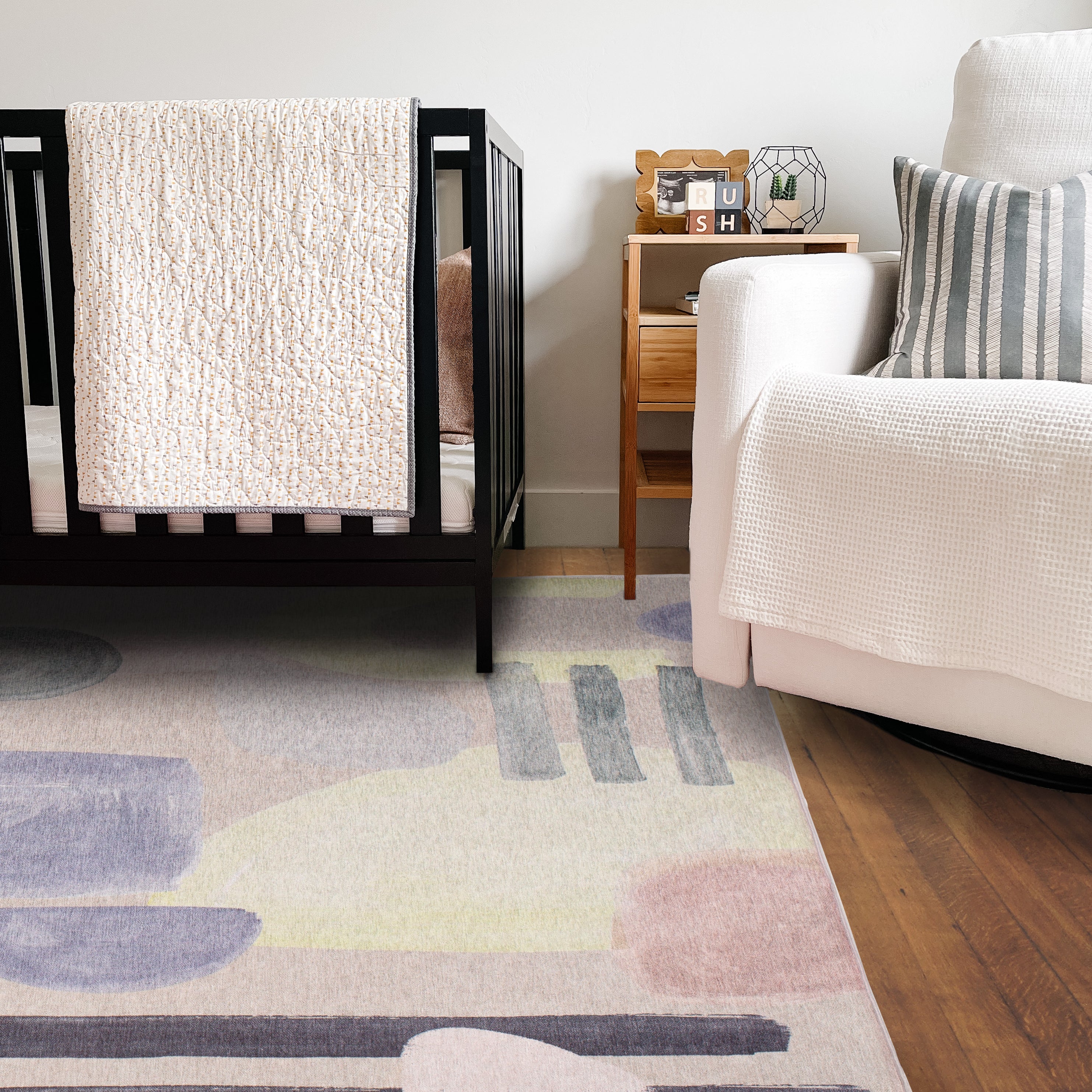The 5 Best Non-Toxic Rugs for Your Home
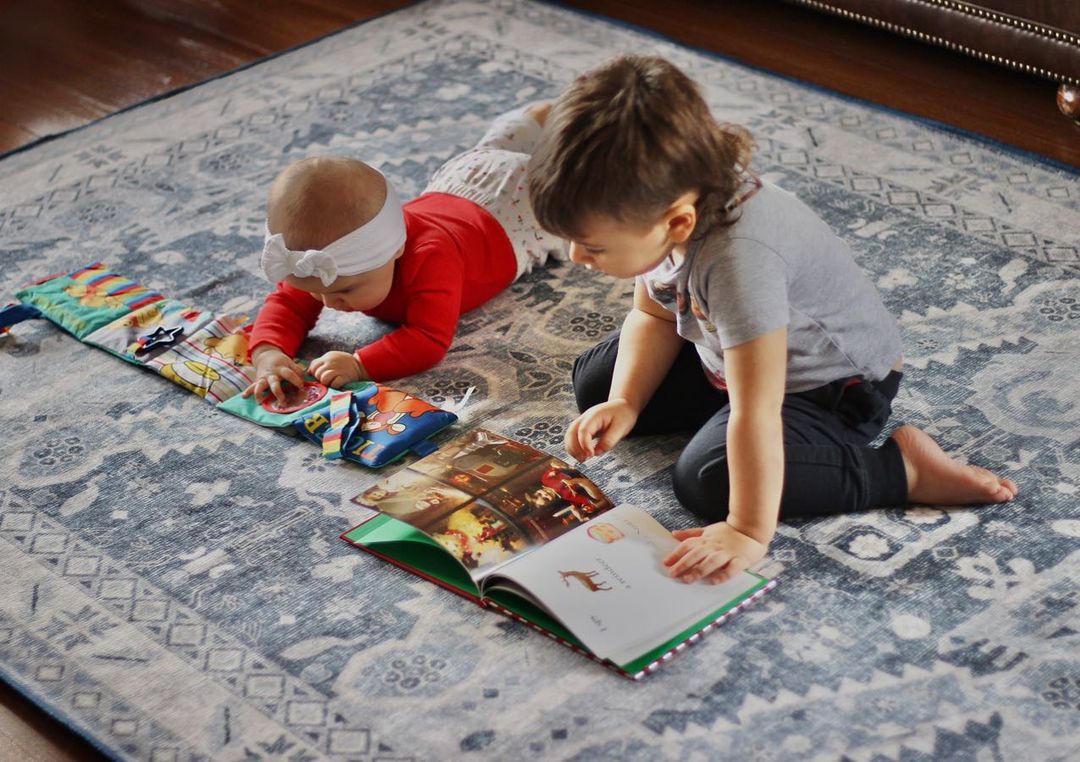
There are so many different ways to ensure that your home feels like your sanctuary. It should be somewhere that boosts your mood when you spend time there and a place that makes you instantly relax when you walk through the door. Whatever your decorating style is, from the most minimalist to the most over-the-top maximalist, your home is a reflection of you. It’s your safe space.
One thing you may not have considered in ensuring your home feels like home is how the items in your home may affect your health and your carbon footprint. Those priorities tend to be much more present when it comes to things like food and fashion.
Even if you’re a dedicated vegan who spends your weekends at local farmer’s markets and clothing swaps, it may not have occurred to you to take stock of the items in your home to ensure that they fit into the same ethos that you follow in other parts of your life.
And even if being eco-friendly and healthy isn’t a major priority in your life, it’s always good to take a look around and consider how you might improve it. Or, if you haven’t begun transforming your house or rented accommodation into a place that feels like home just yet, it’s important to consider all the factors before making any major decisions.
While rugs can’t exactly be “toxic”, there are many chemicals and materials that are often used by mainstream retailers which can be potentially dangerous to your health. There are other chemicals and materials that may be “safe” for your health now, but do damage to the environment in the long run, which is pretty much the same thing as being bad for your health in the grand scheme of things.
What Makes a Rug Toxic?
The idea that a rug could be toxic might seem a little strange to you. Unlike food or cosmetics, rugs aren’t something you’re consuming or (usually) rubbing on your body, so by and large, they seem like a pretty safe bet no matter what they’re made of. And while it’s true you’re not likely to purchase a rug that causes a major health issue, there are some things to look out for. Especially since even the best rugs can impact the air quality in your house, it’s worth thinking about what your rug is made from!
Volatile Organic Compounds (VOCs)
Volatile Organic Compounds or VOCs are chemicals that may be found in common household textiles such as carpets and rugs, as well as products like paint and glue. They’re potentially dangerous because they don’t need to be ingested or touched to be harmful to you — they can evaporate into the air and affect the air quality of the environment around them.
VOCs can cause dizziness, eye and nose irritation, headaches, and even difficulty breathing. They basically can cause air pollution inside your home. Luckily, there are regulations requiring most rug and carpet manufacturers to fall within a certain limit of VOCs, so they are generally safe.
However, there are often exceptions for antique, vintage, or hand-made rugs, which don’t necessarily have a limit on the amount of VOCs they might produce.
Chemicals From the Production Process
Much like with clothing, because there are so many processes involved in producing any textile, there are a lot of ways for harmful chemicals to sneak into a product.
Cotton products can have pesticides from the growing process. You can circumvent this issue by looking for cotton that’s specified as organic, or switching to alternatives like hemp or linen, which don’t tend to use pesticides in the same way.
Some cheap dyes like AZO are banned by the EU due to some potentially carcinogenic properties, and because they’re water-soluble, they can be absorbed into your skin. While this is typically more of a concern in clothing, if you’re walking barefoot on your rug on a regular basis, it’s worth watching out for.
There are also chemicals used to finish many textiles which can possibly be harmful to your health. Things like formaldehyde, phthalates, and chromium may cause skin irritation, respiratory issues, and other health complications if they’re used in something you’re coming into contact with regularly. Looking for chemical-free products and companies that are transparent about their production process can go a long way!
Flame Retardants
Obviously, it’s important for your rug to not be flammable. Unfortunately, some companies use chemicals as flame retardants, such as TDCPP, which is a suspected carcinogen. Carcinogens are compounds that may potentially cause cancer or other health issues. Definitely not something you want to have sitting in your living room!
What are your options, then, if you want to be safe in your rug choice? Particularly if you’re placing your rug in front of a fireplace, flammability may be a serious concern. Luckily, Tumble rugs are fire resistant — but not because of a chemical. It’s because of the material used to make our rugs. Some materials are more fire-resistant than others, and choosing the right material is a much safer, more natural way to keep your home safe.
Chemicals Used in Waterproofing
There’s a class of chemicals known as “forever chemicals” that — as it says on the tin — don’t tend to leave us or the environment. Some chemicals in this class, like PFAs, are thought to be linked to cancer and other serious health problems.
Although this is fairly widely known and PFAs have been phased out of some sectors, they’re still sometimes used in products that are waterproof. This is important, because many rugs that are labeled “spillproof” or “washable” are, necessarily, waterproof to some extent, and may contain dangerous PFAs.
While PFAs may be effective at keeping stains and water away from some of your favorite clothing items and your area rug, it’s definitely not worth it if it also may cause serious health complications for you and your family.
What Are the Best Non-Toxic Rugs?
In order to determine whether the rug you’re eying is non-toxic, you may have to do a bit of research and label-reading… or, you could just use Tumble. Our rugs adhere to US safety standards and have been tested for all sorts of harmful chemicals you want to avoid.
Things like VOCs, Lead, Phthalates, Formaldehyde, and Dichloromethane won’t be found in our rugs. And especially in rugs that are washable, it’s not uncommon to find toxins used to make rugs waterproof and easy to wash. So if you’re looking for something safe and non-toxic, let’s talk about some great options for every style sensibility.
1. For an Artistic Space
If your style tends to match your taste in art — elegant, modern, engaging — consider our Fez rug. It works equally well as a statement-making area rug as it does as a conversation-starting hall runner.

Shop the Fez machine washable rug
2. For a Modern Motif
If your home is a modern marvel, our Petra in Sand/Sea is the perfect accent to your tasteful decor. Designed in a serene and natural-filling mix of warm and cool tones, Petra will complement your space and bring a feeling of calm.
3. For a Classic Lift
If you’ve been coveting a classic Persian rug for ages, but aren’t sure you want to commit to something vintage or antique that may come with some unwanted toxins and chemicals, our Tabriz rug is a great option. It’ll bring the classic beauty you're after, and — of course — it’s non-toxic and easy to care for. That makes it even more beautiful, we think.
4. For a Pop of Floral
If you feel like what your space really needs is a burst of color and life to set it off and make it sing, Flora is the rug you’ve been looking for. As vibrant as she is tasteful, this rug will turn even the coldest, greyest winter day into spring.

5. For a Bohemian Vibe
If boho-chic is your buzzword, Taos is the perfect rug to complement your aesthetic and add some neutral interest. It’s perfect, especially in a space that feels busy, so wants something simple — but not so simple that it feels out of place.
Non-Toxic Is the Way To Go
Making your home cozy and personal is important. But keeping your home safe is even more important. When it comes to choosing major textiles for your space like rugs, consider non-toxic alternatives, and do some research into the make-up of the rug you're purchasing, so you can rest assured that whatever rug you bring into your home brings its good looks, with none of the baggage.
Sources:
Carpet Emissions Law | NYC Health
Hazardous Chemicals in Carpets | Greenpeace
New Report Shows Suspected Carcinogens and Endocrine Disrupters in European Carpets | WEN
